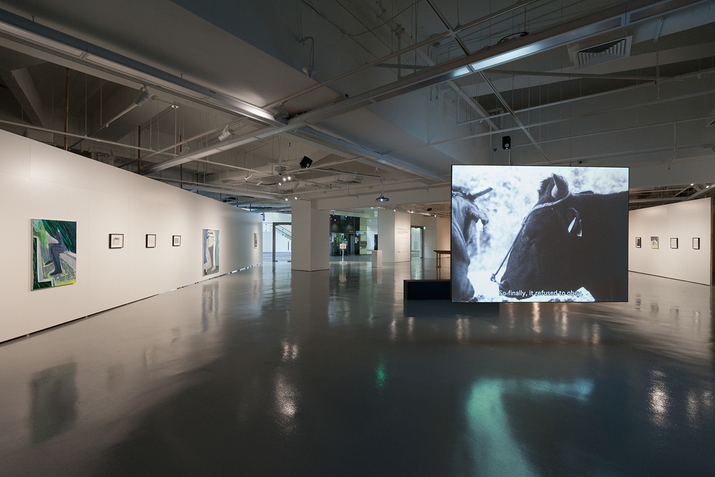Shows
“The World Precedes the Eye”
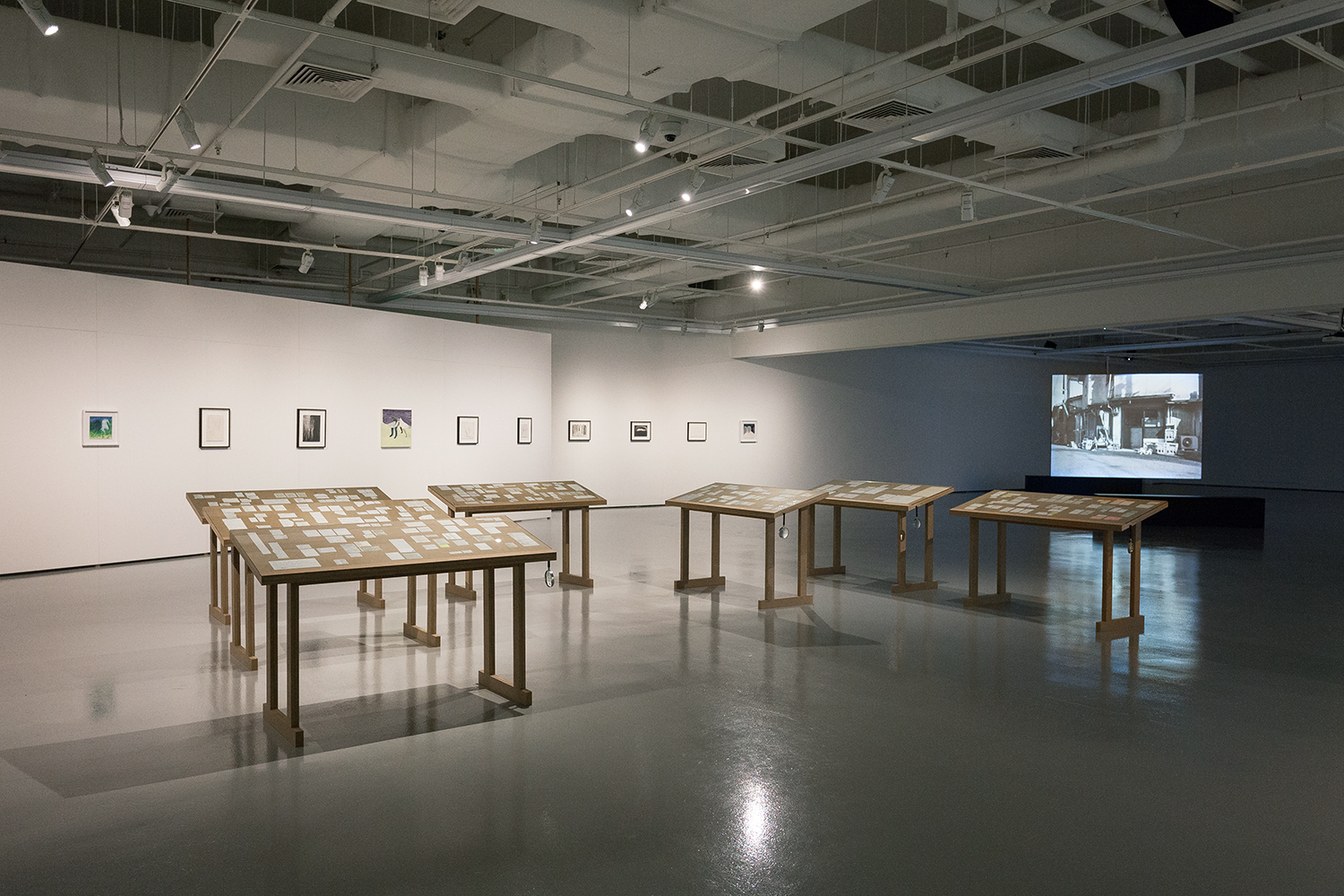

When was the last time you felt you know so little about things familiar to you? “The World Precedes the Eye,” mounted at the Institute of Contemporary Arts Singapore (ICA) of Lasalle College of the Arts, beckoned for a fresh look at the materiality of things by staging artworks that innervated new learning. Framed as an alternative narrative to the Anthropocene, a geological term that indicates human activity as the dominant driver affecting our environment and climate, the show promoted the idea that “we share this world and are not its primary subject.”
Two works, which were first seen upon entering the ICA’s exhibition space, set the overall tone for the entire exhibition. A pitch-black box of some 20 square meters showed Pratchaya Phinthong’s film projection A Proposal to Set CH4*5.75H2O on Fire (Work in Process) (2016). In the film, we witness the burning of an ice compound called methane hydrate. Once the icy solid is lit, gas trapped within is released to fuel a semi-transparent orange and blue flame. Through this work, Phinthong wanted to explore and raise awareness of the potentiality of methane hydrate identified by scientists as an alternative energy source. Behind the viewing room for Phinthong’s film was Matt Hinkley’s unassuming, untitled 2016 installation of diminutive, pigmented resin sculptures scattered on the floor. Each element in the installation was painstakingly cast and sculpted. A closer look revealed unexpected details, such as puzzling marks on their surfaces, pulling in the viewer for an even closer examination and leaving us to wonder how a collection of screws, stones, seeds and more came to meet in the space.
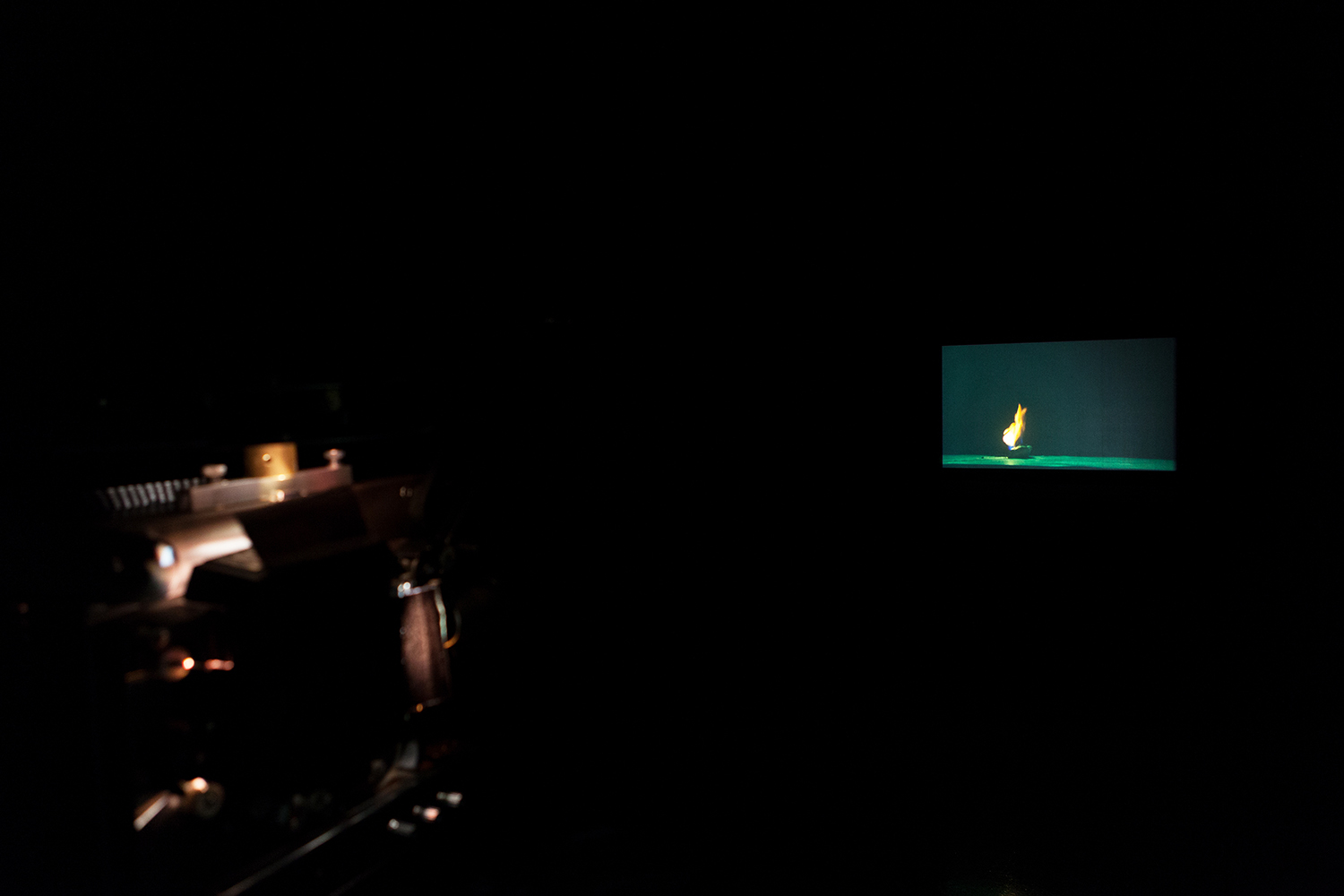
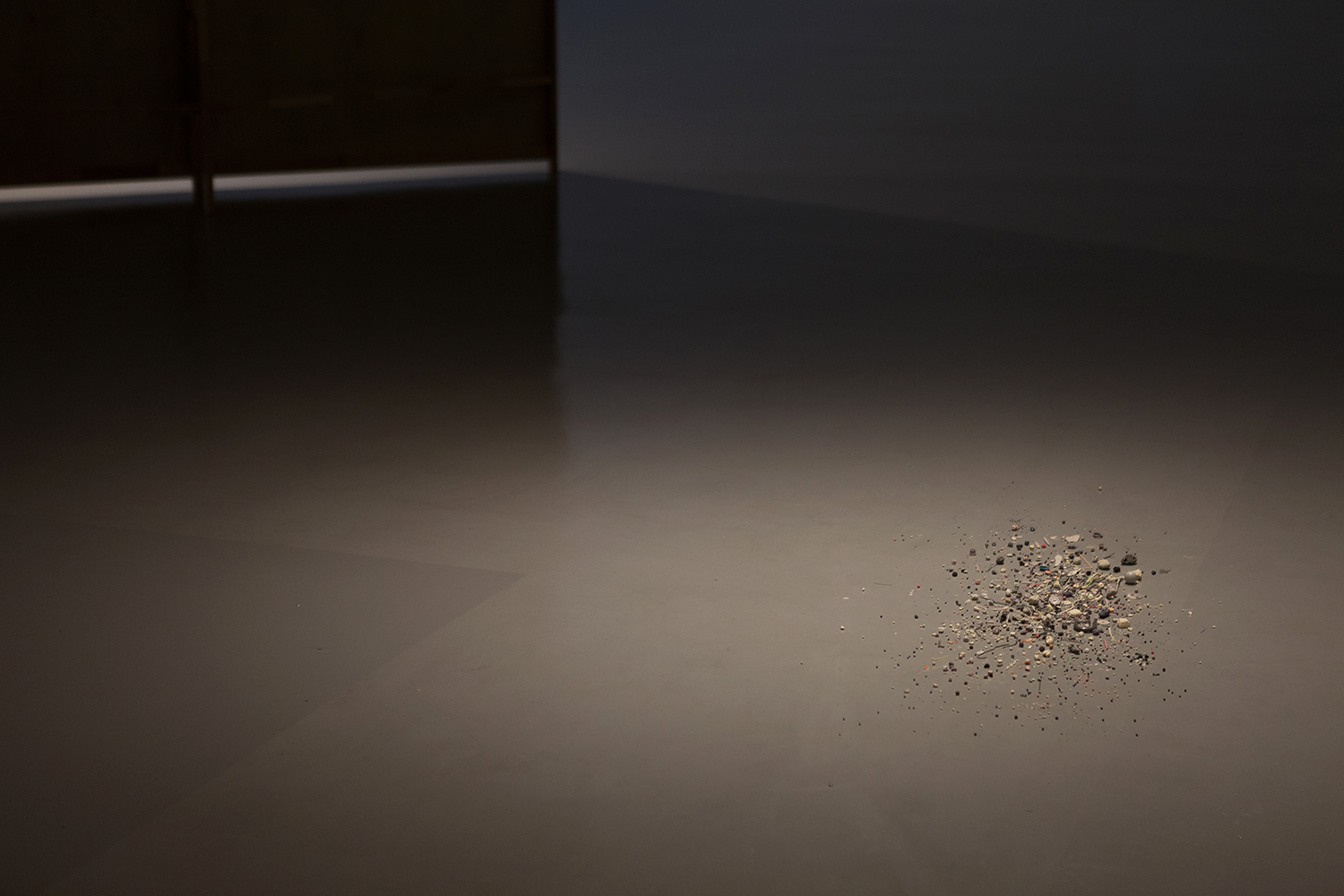
Together, Phinthong’s and Hinkley’s projects encourage the viewer to reexamine things with renewed intensity—and respect those objects’ open-ended potentiality unknown to humans. As much as “The World Precedes the Eye” is a show about materiality, it also speaks to the limits of human perception and knowledge.
Three other works at ICA—Song-Ming Ang’s Something Old, Something New (2015), Nabilah Nordin’s Peak Performance Plan (2016) and Shimura Nobuhiro’s Japanese Cattle (2015)—investigated the notion of materiality in relation to production and labor. There were, however, minor divergences: While Ang’s work, which included a painstaking reproduction of a 19th-century wooden music stand in glass, was meant as a criticism of the contemporary art world and its increasing emphasis on fast, large-scale productions, Nordin’s and Nobuhiro’s projects pivoted toward appraisal of overproduction and its inherent cruelty. This brutalism, however, held a paradoxical place in the show, especially in Nobuhiro’s anthropological video project. In the footage, we observe the Mishima-Ushi cattle, which are well known in Japan for their stamina and are kept by farmers as beasts of labor. Within the video, Nobuhiro reinstates the power relation between man and animal—bucking the exhibition’s objective of moving away from the Anthropocene.
That awkward status of Japanese Cattle echoes the first work seen in the show. Phinthong’s advocacy for a greater visibility of the energy compound, too, risks reinstalling the tired trope of the intrepid explorer, positioning humans as the conqueror—and exploiter—of the natural world, particularly when there are numerous ecological concerns regarding energy-related explorations in the Arctic, where methane hydrate is most commonly found.
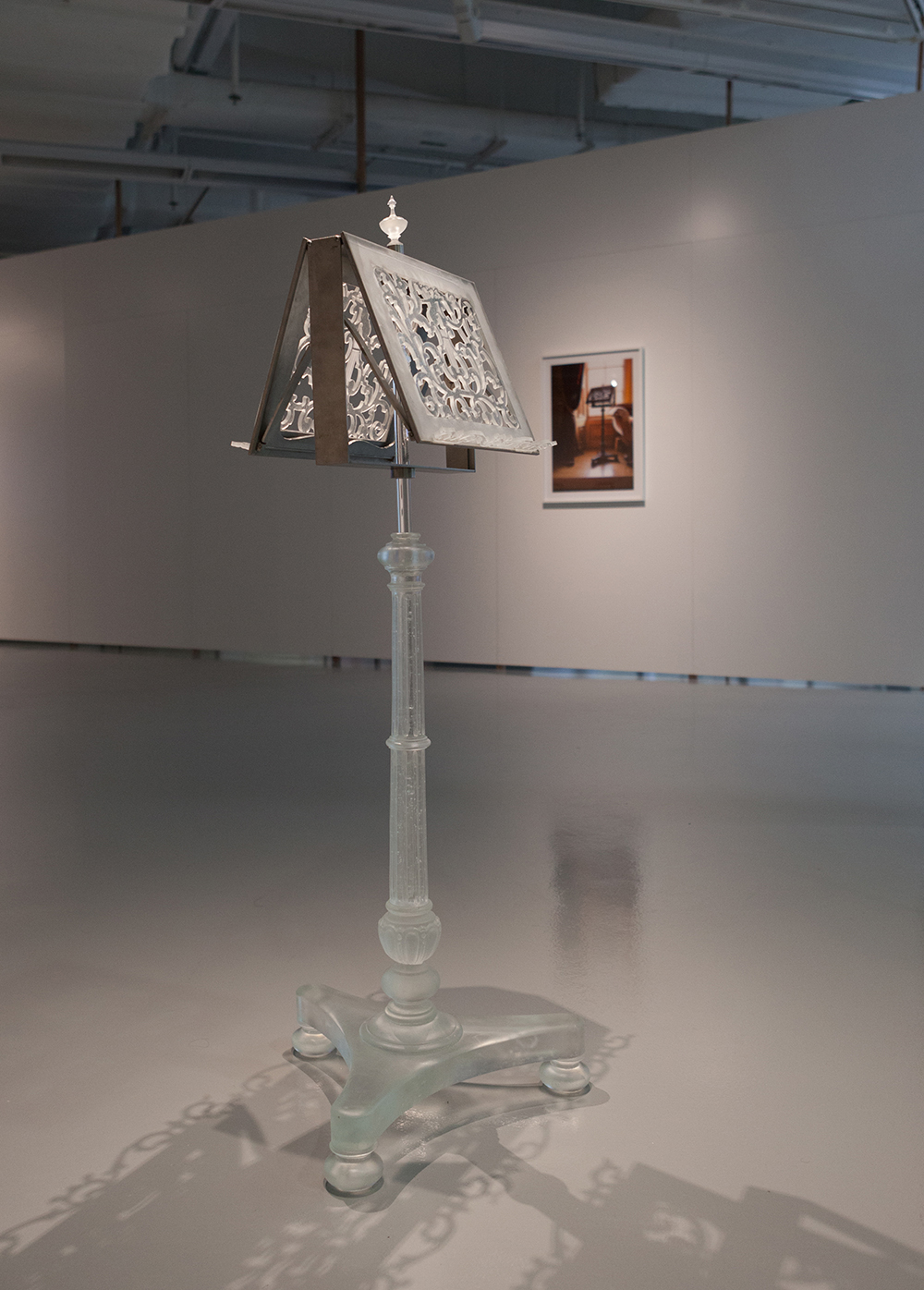

As an affiliate project of the Singapore Biennale 2016, “The World” resonated with a thread running through the Biennale itself—that matter matters. Indeed, a strong strand of works at the biennale begged us to look at the historical significance of the objects the artists used to create their works. Titarubi’s History Repeats Itself (2016) employed the historically charged nutmeg—once worth its weight in gold and over which countless wars fought—as its material. Chou Shih Hsiung’s Good Boy, Bad Boy (2016) used recycled engine oil as the material for his two-paneled “painting,” inviting us to reflect on the relationship between this material and our epoch. Chia Chuyia, in Knitting the Future (2015/2016), delivered a performance using leeks, which hold significance for the diasporic Teochew Chinese, to knit a body-length garment. This nexus between materiality and historicity enriches a new take on realism found in “The World Precedes the Eye.”
“The World Precedes the Eye” is on view at the Institute of Contemporary Arts Singapore until February 1, 2017.

